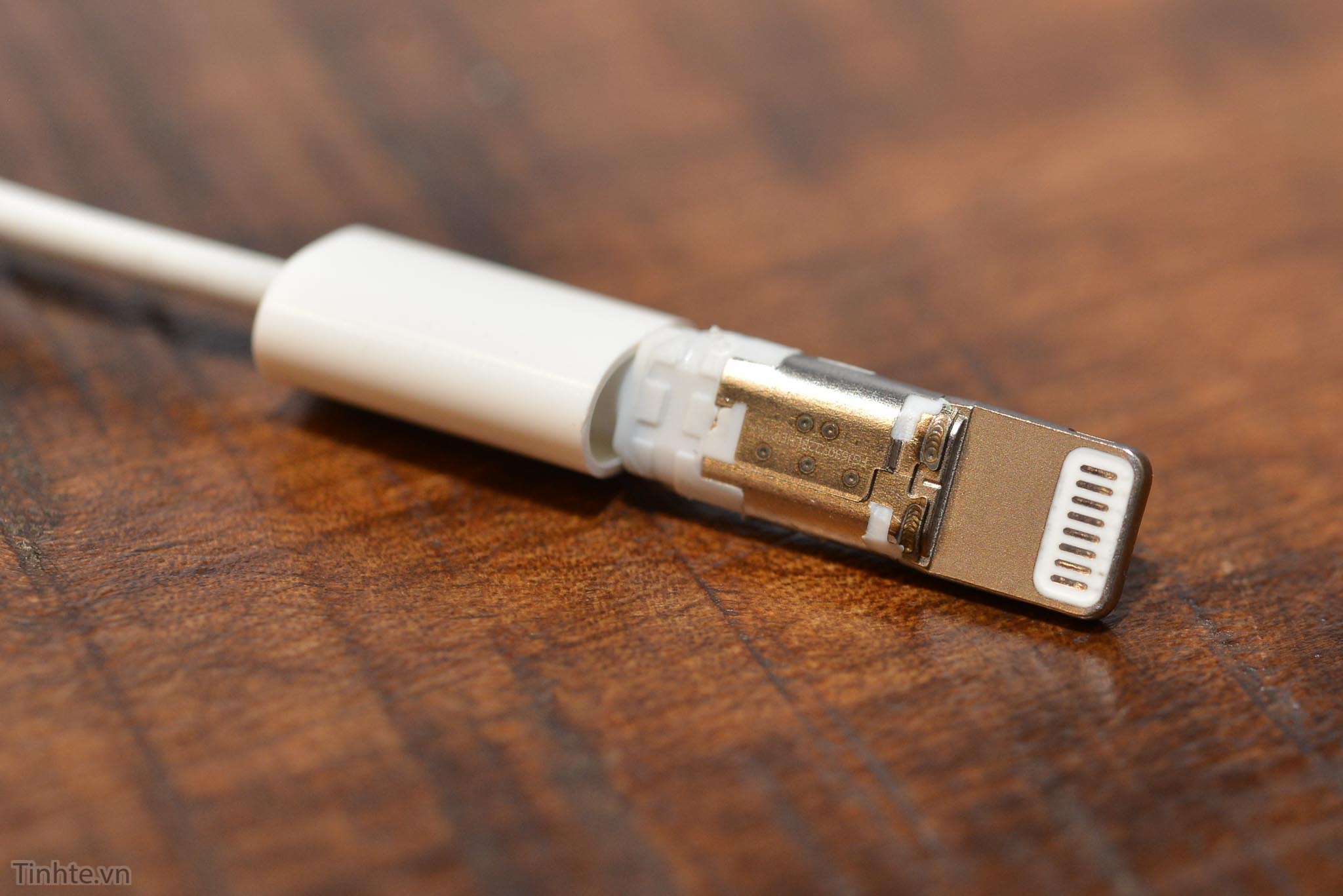Genuine-looking iPhone 7 Lightning-to-3.5-mm audio adapter caught on video.
As you know, the next iPhone is expected to ditch the 3.5mm analog audio jack for wireless headphones, powered by Bluetooth, and wired ones, driven by Lightning. Now, certain sources are adamant that the handset may ship with a Lightning-to-3.5-mm audio adapter in the box so that folks could continue using their existing audio accessories.
Today, we get another glimpse of the claimed adapter in a set of leaked images and an accompanying high-resolution video. This latest leak came on Thursday via Vietnamese blog Tinhte.vn, which claims to have received the adapter from a Foxconn factory.
First, let's take a look at the video hands-on (hope your Vietnamese isn't rusty).
As you would expect, the adapter is very short. Its industrial design, as you can see for yourself, indeed resembles Apple's existing adapters, such as the USB-C to USB and Thunderbolt to Ethernet.
After plugging your wired headphones or other piece of audio equipment into the 3.5mm end of the adapter, and connecting the other end into the Lightning port of your iOS device, iPhone 7 owners should be able to enjoy analog audio from their iOS device without needing to buy a Lightning-enabled version of EarPods or put up with sound quality issues plaguing Bluetooth headphones.
The site tore apart the accessory to reveal what seems to be electronics and an encryption chip, which is mandated by Apple for all 'Made for iPhone' certified Lightning accessories. The fact may be interpreted as yet another indication that the pictured product could be a genuine Apple accessory.
When connected to an iPad running iOS 9 or older, a prompts appear saying that "This accessory is not supported by this device." For those wondering, plugging the adapter into a device like the iPhone 6s or iPhone SE with a beta of iOS 10 installed works without any hiccups.
According to the site, you can even plug the headphones into both the standard 3.5mm audio jack on an existing iPhone and then connect the adapter to the Lightning port, in which case iOS will route audio through the Lightning port.
The biggest downside to ditching the 3.5mm audio jack is the fact that owners of wired headphones won't be able to listen to music whilst charging the device. On the plus side, the move to all-digital sound should enhance the sound quality.
The removal of the 3.5mm audio jack would also free up space inside the device for other components because the 3.55mm jack is quite long inside the device and an additional digital-to-analog (DAC) converter chip is required on the logic board.
RELATED: is 3.5mm audio plug the new floppy drive?
Moving to all-digital sound via Lightning and wireless Bluetooth audio basically moves the DAC chip from the iPhone into either the adapter or the headphone hardware itself. By bundling this adapter with the next iPhone, Apple would ensure that every customer would be able to instantly use their legacy headphones with the phone while helping reduce manufacturing costs for headphone makers.
Source: Tinhte.vn (Google Translate) via MacRumors
Source: www.bing.com
Images credited to www.bing.com and www.livehacking.com





